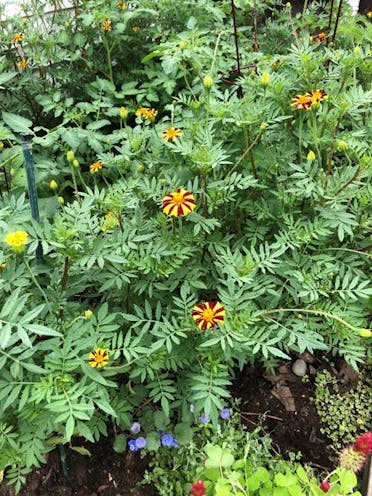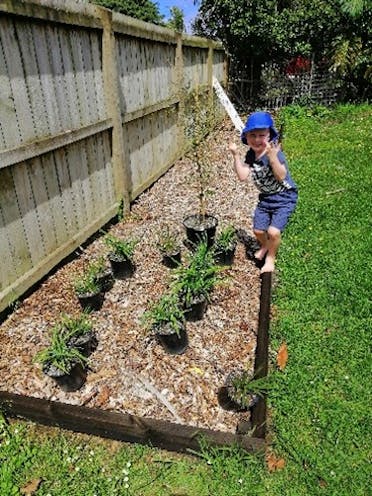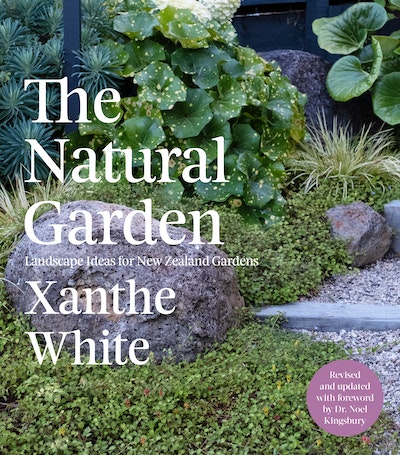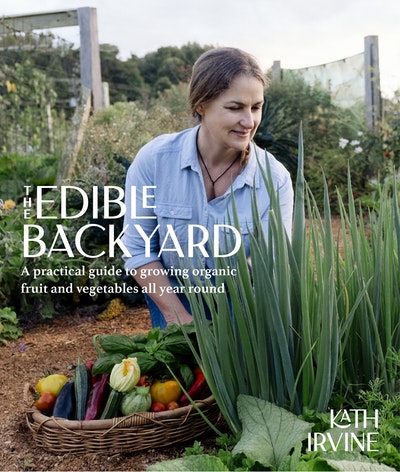PRHNZ staffer, Becky, is a passionate gardener and now spring is here she's turning to her bookshelf for inspiration and advice. Here are her three go-to books for gardening in Aotearoa.
Are you creating a new garden or overhauling an old one?

Recently revised and updated, The Natural Garden by Xanthe White is the perfect resource for establishing or redesigning your garden. It's organised by type of garden (small, urban, coastal, dry etc) and I'm finding multiple chapters useful; in the new house we recently moved to I'm planning a combination of edible/urban/native, so I'm flicking back and forth between sections.
For example:
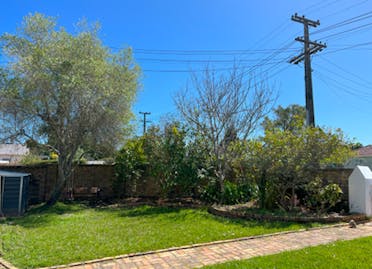
These are fruit trees in the front garden, facing north-west.
The olive tree blocks light into the lounge but I like its shape and if we chop it down we’ll lose some privacy, so it will probably stay. The lemon tree is apparently 50 years old and the lime and apple trees look pretty mature. Randomly there is also a camellia, some horrible agapanthus and a couple of sad looking cabbage trees.
After consulting The Natural Garden, I will be pulling out the camellia, one of the lime trees (one can only drink so many margaritas) and the agapanthus, and planting an avocado tree and another cabbage tree or two.
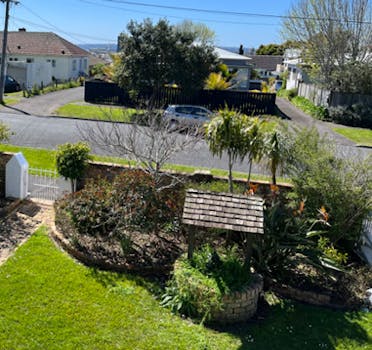
Front garden facing north.
A strange mixture of a peach tree (keep), cabbage (keep) and pony-tail (remove) trees, some shrubs native to various parts of Asia (may keep the ones that bees like), privet (AGHR! REMOVE), a bird of paradise and most excitingly a filled-in well with a rhododendron and some weeds growing in it. Do I repurpose this well into a ye olde English flower garden or an exotic pan-Asian water garden or what? This is the book to tell me!
Are you interested in growing your own food?
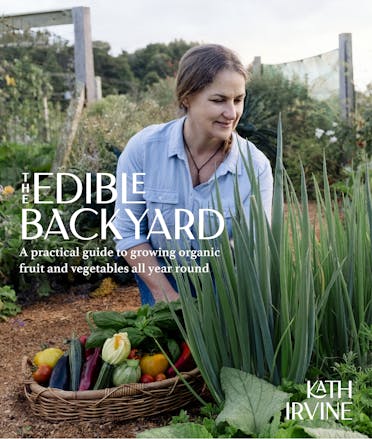
The Edible Backyard is a great book for people wanting an… edible backyard. My copy of this is stuffed with bookmarks. It is so packed with information that I forgive it for not having a photo of every single plant Kath mentions.
Warning: You may get garden envy looking at the photos of Kath's!
Whether you have a big area or a small urban space, this book is an essential guide for the edible garden enthusiast. Kath uses permaculture principles which I used to be intimidated by but now understand to be really time-saving. For example, I used to have bare earth around my tomatoes which I kept having to weed, but thanks to Kath I now know that planting particular things underneath keep the weeds at bay and enrich the soil and look pretty – here’s my tomatoes last summer, lovingly supported by marigolds, phacelia and crimson clover.
Thanks to Kath I’ll also be planting borage, yarrow and various other herbs under the fruit trees I mentioned above – no more weedy bark beds for us!
Do you want to incorporate more NZ natives into your garden?
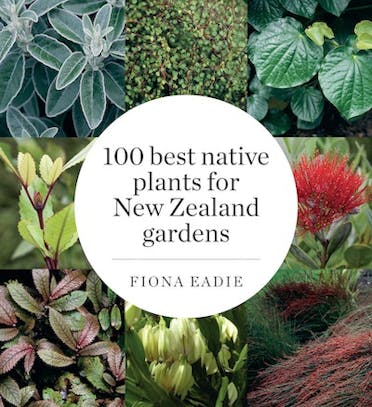
I turn to this when choosing bigger, more permanent plants e.g. “the right pittosporum to block the neighbour’s wall,” “something purple to attract bees” and “ground cover for the shady spot beside the compost bin that I can’t be bothered weeding around.”
Here’s the garden bed under the fenceline at our old house. I planted dwarf flax, manuka, libertia grandiflora, kōwhai and kākā beak. As you can see from the photos, taken two years apart, the star was the kākā beak: it was so happy it burst through the fence and grew way out over the lawn and had hundreds of bees in summer. Sadly the kōwhai never recovered from the Auckland floods - a burst water main just uphill from us flowed briskly along the fenceline for two days (everything else rallied though).
Becky's top 3 gardening tips:
- If you are going to be somewhere for a while it’s worth spending money on proper hard landscaping. With the native shrubbery above, we thought we weren’t going to live there for long so saved money by just getting wooden edges put around at lawn level, and I then spent seven unexpected years yanking kikuyu grass out. We should have paid for the (much more expensive) concrete edges that would have been embedded a foot deep and prevented grass and weeds from getting in. Sigh.
- Plant identification apps are great. At our old house there was a scruffy mystery plant that I was about to pull out but then using PictureThis I discovered it was karamu so I left it then it turned into a still-scruffy-but-with-nice-leaves-and-berries plant that then self-seeded into the native shrubbery. Apps are also useful for snapping unfamiliar things you see in other people’s gardens that you like.
- Once, before I had children, I pulled a (small) lawn up because I wanted an immaculate bowling green-like lawn instead of kikuyu. This involved hiring a roller, using litres of poison, digging up turf, and my boyfriend paying his flatmate to help me so he could go and play golf. It took weeks, then within weeks of planting a fescue rye mix it had reverted to kikuyu but with the unwelcome addition of dock leaves. Never do what I did unless you are willing to waste weekends of your life and become a lawn bore at parties.


